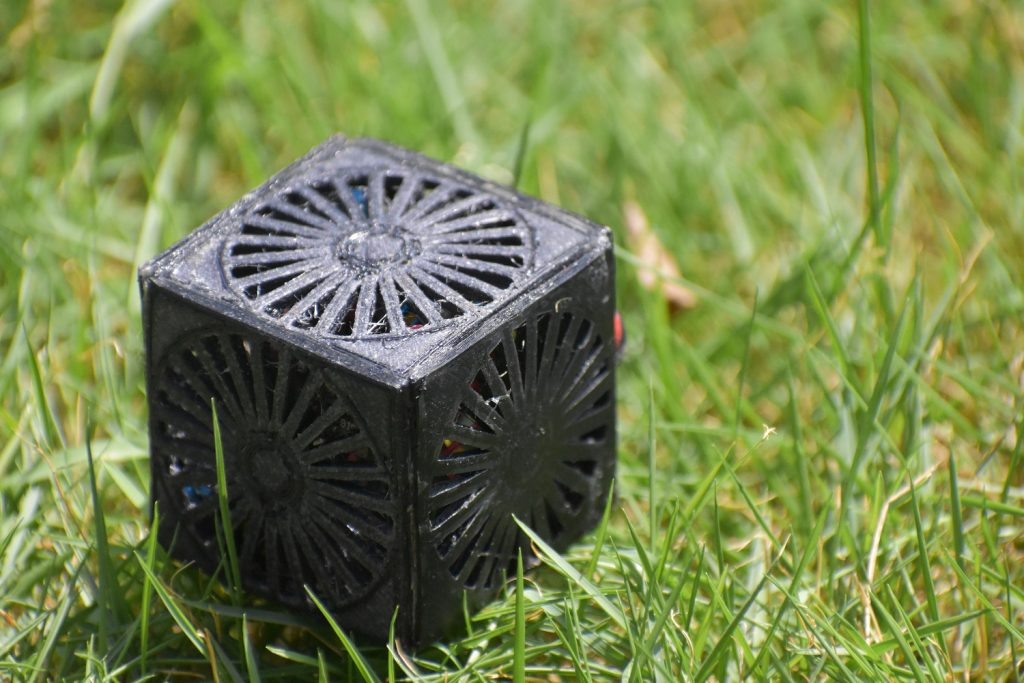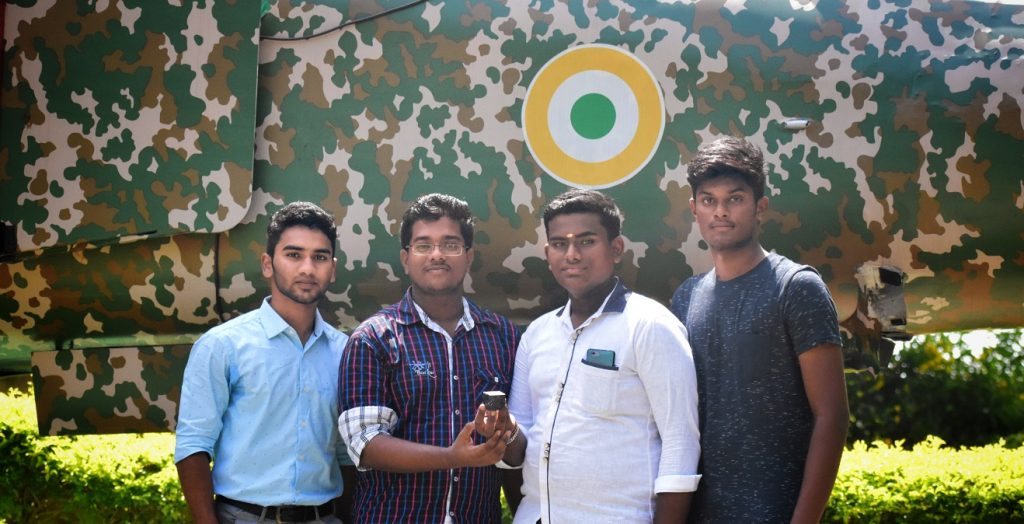 It doesn’t take fancy equipment to build a satellite anymore. Small companies, schools and even individuals armed with 3D printers are capable of creating CubeSats, small, boxlike satellites that are being more frequently launched into space carrying experiments. It doesn’t even take an expensive 3D printer. In 2015, Indian startup 3Ding introduced the $325 FabX 3D printer, a price that was almost unheard of at the time. A few months later, the company introduced the FabX 2.0 for only a slightly higher price. Now 3Ding has used the FabX to 3D print what it is calling the world’s lightest satellite.
It doesn’t take fancy equipment to build a satellite anymore. Small companies, schools and even individuals armed with 3D printers are capable of creating CubeSats, small, boxlike satellites that are being more frequently launched into space carrying experiments. It doesn’t even take an expensive 3D printer. In 2015, Indian startup 3Ding introduced the $325 FabX 3D printer, a price that was almost unheard of at the time. A few months later, the company introduced the FabX 2.0 for only a slightly higher price. Now 3Ding has used the FabX to 3D print what it is calling the world’s lightest satellite.
The satellite, called Jai Hind 1-S, weighs only 33.3 grams and was 3D printed from nylon. It was designed by a team from Hindustan Institute of Technology and Science as part of NASA and idoodlelearning‘s Cubes In Space initiative, which challenges students from 11 to 18 years of age to design experiments to be launched into space. The team consisted of students Hari Krishnan, Project Lead; Amarnath, Hardware and Software Engineer; Giri Prasad, Test Operation Engineer; and Sudhi G, Structural Engineer. Professor Dinesh Kumar assisted the team. Whereas this is a great achievement there are more femtosatellites such as Kicksat’s sptites and chip-based satellites that are as light as this one.
According to Krishnan, the satellite is designed to remain functional for a full 24 hours, as opposed to 12 minutes like the team’s last effort in 2017. It will launch on August 24th.
“Since Nylon is lightweight and has high heat and abrasion resistance, it aligned with our goal of making the lightest satellite possible,” said Krishnan. “Our application required small size production of Nylon, so no conventional methods made sense and hence we decided to try 3D Printing. The 3Ding team provided valuable design suggestions which helped us in designing an effective model. Since 3D Printing is quicker and cheaper with respect to our application, we were able to try 2 -3 design iterations before arriving at the final design. I was amazed to see that the whole 3D Printing process took only about 5-6 hours.”
The lightweight satellite will be used to observe the properties of nylon in microgravity, as well as to measure weather parameters like humidity, pressure and temperatures, plus other parameters like acceleration and velocity to track the trajectory of the satellite.
3D printing and CubeSats have done wonders for the world of citizen science, allowing anyone with an interest to build a satellite, design and experiment, and launch it into space for observation. NASA has always been fond of crowdsourcing discoveries, launching competitions and initiatives to encourage the public to study the skies for themselves.
3Ding was proud to help with the 3D printing of the satellite. In addition to the FabX series of 3D printers, which can print with industrial grade materials like carbon fiber and HIPS, it also offers the Hydra series and acts as a service provider for a wide variety of clients. 3Ding currently serves more than 7,500 clients in India.
Discuss this and other 3D printing topics at 3DPrintBoard.com or share your thoughts below.
[Images provided by 3Ding]
Subscribe to Our Email Newsletter
Stay up-to-date on all the latest news from the 3D printing industry and receive information and offers from third party vendors.
You May Also Like
Precision at the Microscale: UK Researchers Advance Medical Devices with BMF’s 3D Printing Tech
University of Nottingham researchers are using Boston Micro Fabrication‘s (BMF) 3D printing technology to develop medical devices that improve compatibility with human tissue. Funded by a UK grant, this project...
3D Printing Webinar and Event Roundup: April 21, 2024
It’s another busy week of webinars and events, starting with Hannover Messe in Germany and continuing with Metalcasting Congress, Chinaplas, TechBlick’s Innovation Festival, and more. Stratasys continues its advanced training...
3D Printing Webinar and Event Roundup: March 17, 2024
It’s another busy week of webinars and events, including SALMED 2024 and AM Forum in Berlin. Stratasys continues its in-person training and is offering two webinars, ASTM is holding a...
3D Printed Micro Antenna is 15% Smaller and 6X Lighter
Horizon Microtechnologies has achieved success in creating a high-frequency D-Band horn antenna through micro 3D printing. However, this achievement did not rely solely on 3D printing; it involved a combination...































